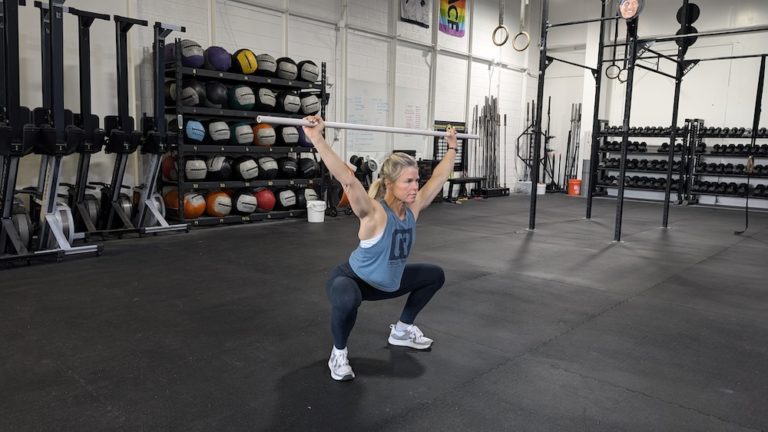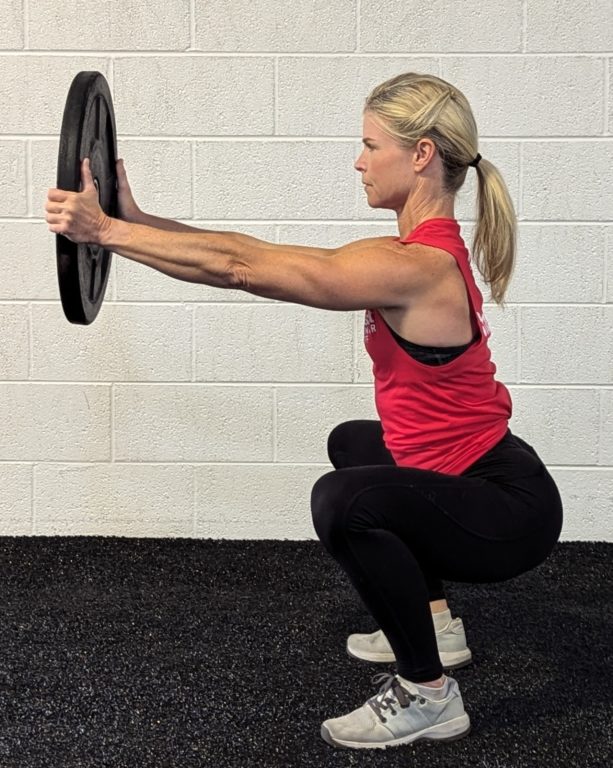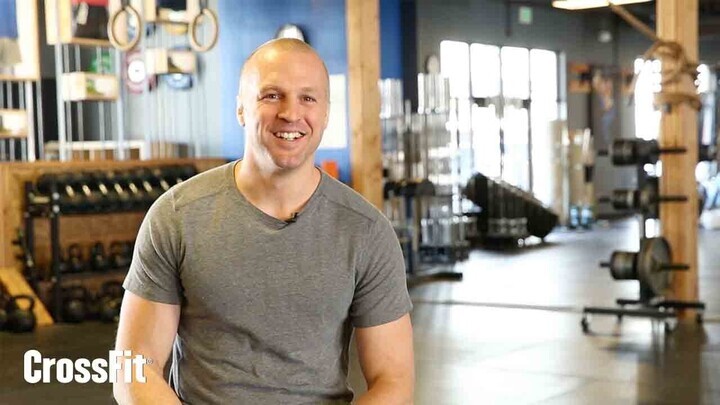Question: I can’t do an overhead squat. What should I do?
June 11, 2025
Question: I can’t do an overhead squat. What should I do?
The overhead squat is one of the most challenging movements we do in CrossFit. It challenges the strength, stability, and range of motion throughout our entire body to execute correctly. In addition, the movement also demands the development of neurological aspects of fitness, such as coordination, accuracy, agility, and balance.
Due to the difficulty, I have heard some athletes say it’s unnecessary and we shouldn’t be spending our time doing it. However, the difficulty also expresses the value of the movement. Executing it correctly will develop and demonstrate strength, stability, range of motion, and neurological aspects of fitness, making most other weightlifting endeavors seem insignificant by comparison. So, it’s worth spending some time practicing.
I also like to think about things from a longevity perspective. I’ve come to think that if someone can overhead squat well, they can probably handle the tasks everyday life demands. What are they going to do in their daily lives that is going to exceed this demand?
Now, when it comes to working with athletes who cannot do the movement correctly, there are several ways to coach them.
This is obvious, but it is the most crucial step. Dedicated practice is often overlooked because it’s not fancy. It involves the relentless pursuit of technical refinement under little to no load at times. I’m convinced that using a PVC pipe and moving at slow tempos on a routine basis will develop the capacity of this movement more than anything else. This can be done every day as part of your warm-up or cool-down.

Beyond practicing the overhead squat itself, performing squat-specific drills, such as squat therapy and a plate counterbalance squat, that work to improve the athlete’s torso position will also help enhance the execution of this movement.

Now, practice works wonders, but let’s say you have an athlete who has severe limitations, potentially due to a lack of flexibility, a lack of mobility, or an anatomical issue that restricts movement. Perhaps this is an athlete who will never progress to a beautiful-looking overhead squat. What do you do? There is no one-size-fits-all strategy for everyone, but the following options provide solid parameters to follow that go beyond simply using a PVC pipe for every overhead squat workout. Even if not performing the specific movement, you can still achieve many variables of the intended stimulus, like loading, volume, and duration.
I will have nearly all athletes still practice the movement with a PVC pipe during the general and specific warm-ups, striving to perform the movement as well as possible, even if I plan to have them modify it for the Workout of the Day.
This is something that was brought to my attention by Pamela Gagnon, and it involves the ways in which she has athletes scale gymnastics movements. An option she may have is to scale a kipping pull-up to a combination of kip swings and ring rows. This same consideration could be applied to an overhead squat, which requires both a squatting function and an overhead stability function. With this in mind, we would have athletes modify the movement to something like a back or front squat, followed by a plate overhead hold. The loading, reps, and duration would vary depending on the intended stimulus.
Performing an overhead lunge variation is actually easier from a mobility standpoint, as it allows you to keep your torso upright, which demands less flexibility from the shoulder region. You can even get away with using a narrower grip, which provides more shoulder stability as well. My personal favorite when using this movement in place of an overhead squat is a barbell overhead reverse lunge. The obvious change-up is that we are replacing a bilateral movement with a unilateral movement. However, this exercise still achieves some of the primary functions of the overhead squat, and it can serve as a nice change of pace for a week when several bilateral squatting patterns are programmed.
This variation of the overhead squat can be a viable option for those with sound squatting mechanics and shoulder stability but lack the shoulder flexibility to maintain the correct overhead position of a traditional barbell overhead squat. This tool could be recommended as an option for light to moderate load conditioning workouts.
Elevating the heels on a stable surface or utilizing Olympic weightlifting shoes allows the athlete’s knees to push forward to a greater degree while keeping their heels rooted in a stable surface area, which is particularly useful for those with tightness in the lower leg region or shoulders. The reason this is a viable option is that it allows the athlete to keep their torso more vertical, which means there is less demand on shoulder flexibility to perform the lift.
My other recommendation is to vary your scaling options, which may help athletes to progress. If athletes scale at the same rate all the time, they may start to plateau prematurely. One day, have them try the overhead squat with a PVC pipe. Then, next time, have them split the movement into two pieces, and so on. This can help keep them engaged and avoid the frustration of repetitive scaling, while also helping them progress forward.
Have a question for a coach? Please submit that here.
 Eric O’Connor is a Content Developer and Seminar Staff Flowmaster for CrossFit’s Education Department and the co-creator of the former CrossFit Competitor’s Course. He has led over 400 seminars and has more than a decade of experience coaching at a CrossFit affiliate. He is a Certified CrossFit Coach (CF-L4), a former Division 1 collegiate wrestler, and a former CrossFit Games athlete.
Eric O’Connor is a Content Developer and Seminar Staff Flowmaster for CrossFit’s Education Department and the co-creator of the former CrossFit Competitor’s Course. He has led over 400 seminars and has more than a decade of experience coaching at a CrossFit affiliate. He is a Certified CrossFit Coach (CF-L4), a former Division 1 collegiate wrestler, and a former CrossFit Games athlete.